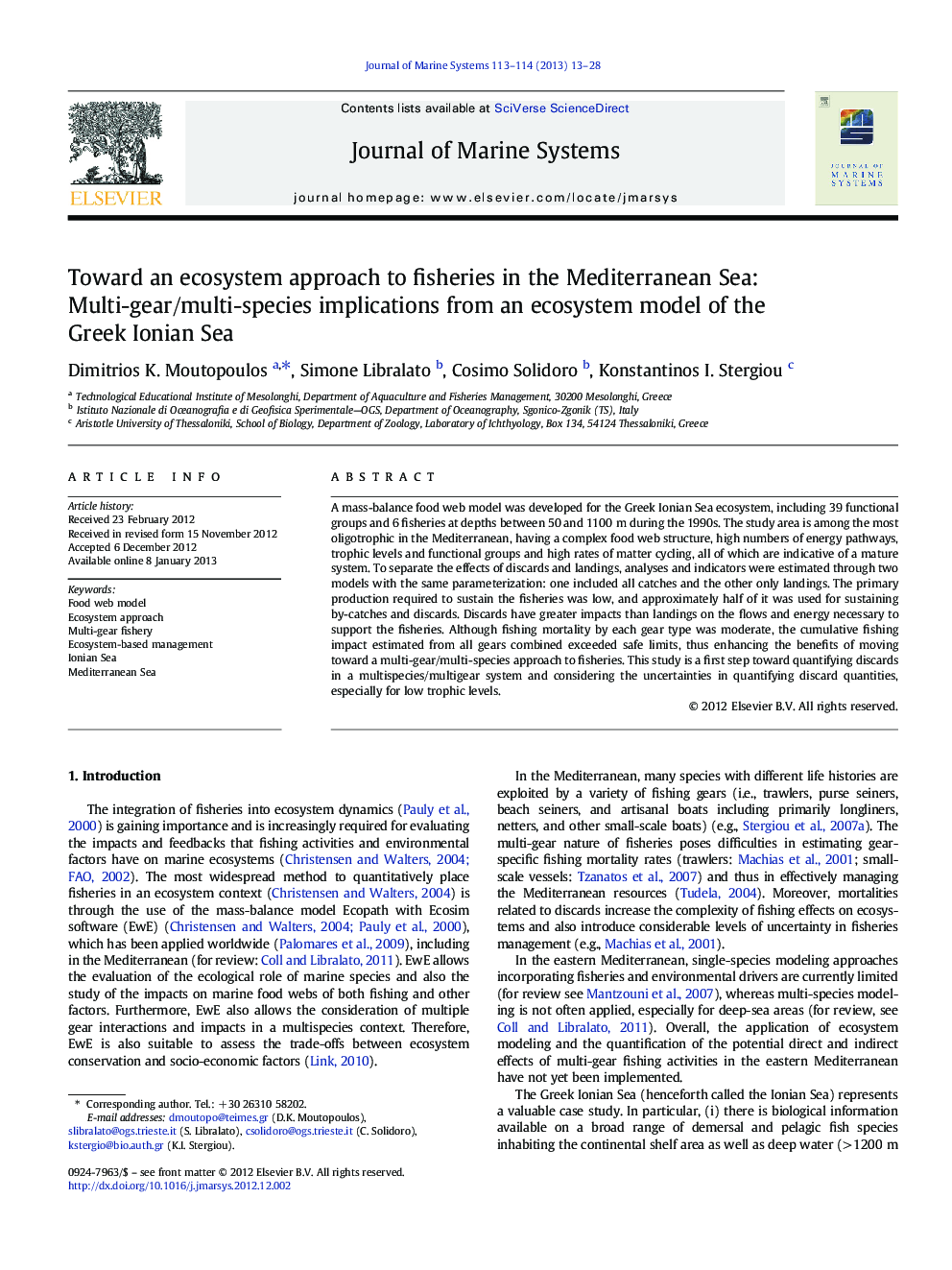| Article ID | Journal | Published Year | Pages | File Type |
|---|---|---|---|---|
| 4548124 | Journal of Marine Systems | 2013 | 16 Pages |
A mass-balance food web model was developed for the Greek Ionian Sea ecosystem, including 39 functional groups and 6 fisheries at depths between 50 and 1100 m during the 1990s. The study area is among the most oligotrophic in the Mediterranean, having a complex food web structure, high numbers of energy pathways, trophic levels and functional groups and high rates of matter cycling, all of which are indicative of a mature system. To separate the effects of discards and landings, analyses and indicators were estimated through two models with the same parameterization: one included all catches and the other only landings. The primary production required to sustain the fisheries was low, and approximately half of it was used for sustaining by-catches and discards. Discards have greater impacts than landings on the flows and energy necessary to support the fisheries. Although fishing mortality by each gear type was moderate, the cumulative fishing impact estimated from all gears combined exceeded safe limits, thus enhancing the benefits of moving toward a multi-gear/multi-species approach to fisheries. This study is a first step toward quantifying discards in a multispecies/multigear system and considering the uncertainties in quantifying discard quantities, especially for low trophic levels.
► A first step to quantify direct and indirect effects of multi-gear fisheries. ► Searching for optimal fisheries strategies in multi-gear fisheries. ► Discards may be more important than landings based on energy flow and energy required to support fisheries.
